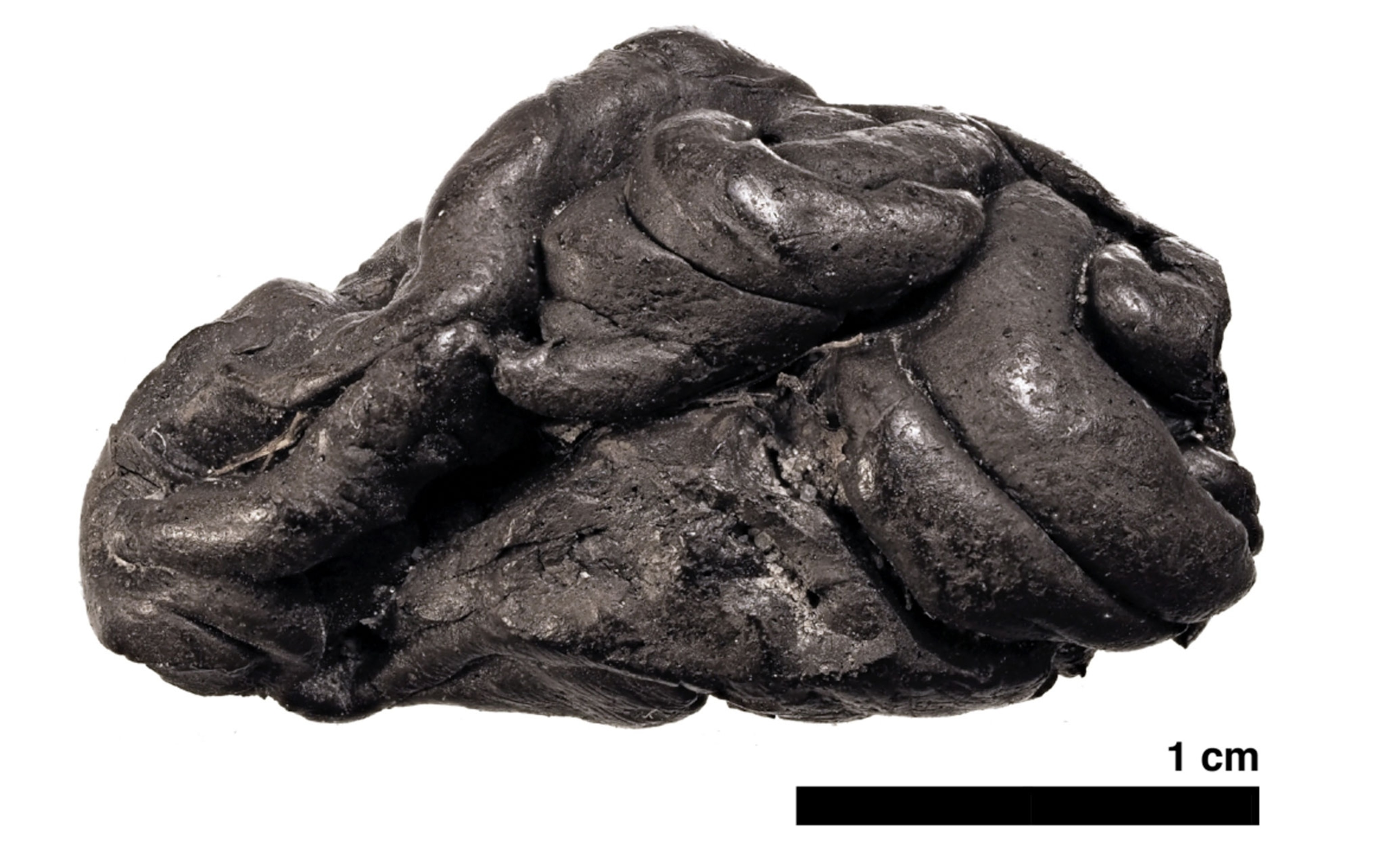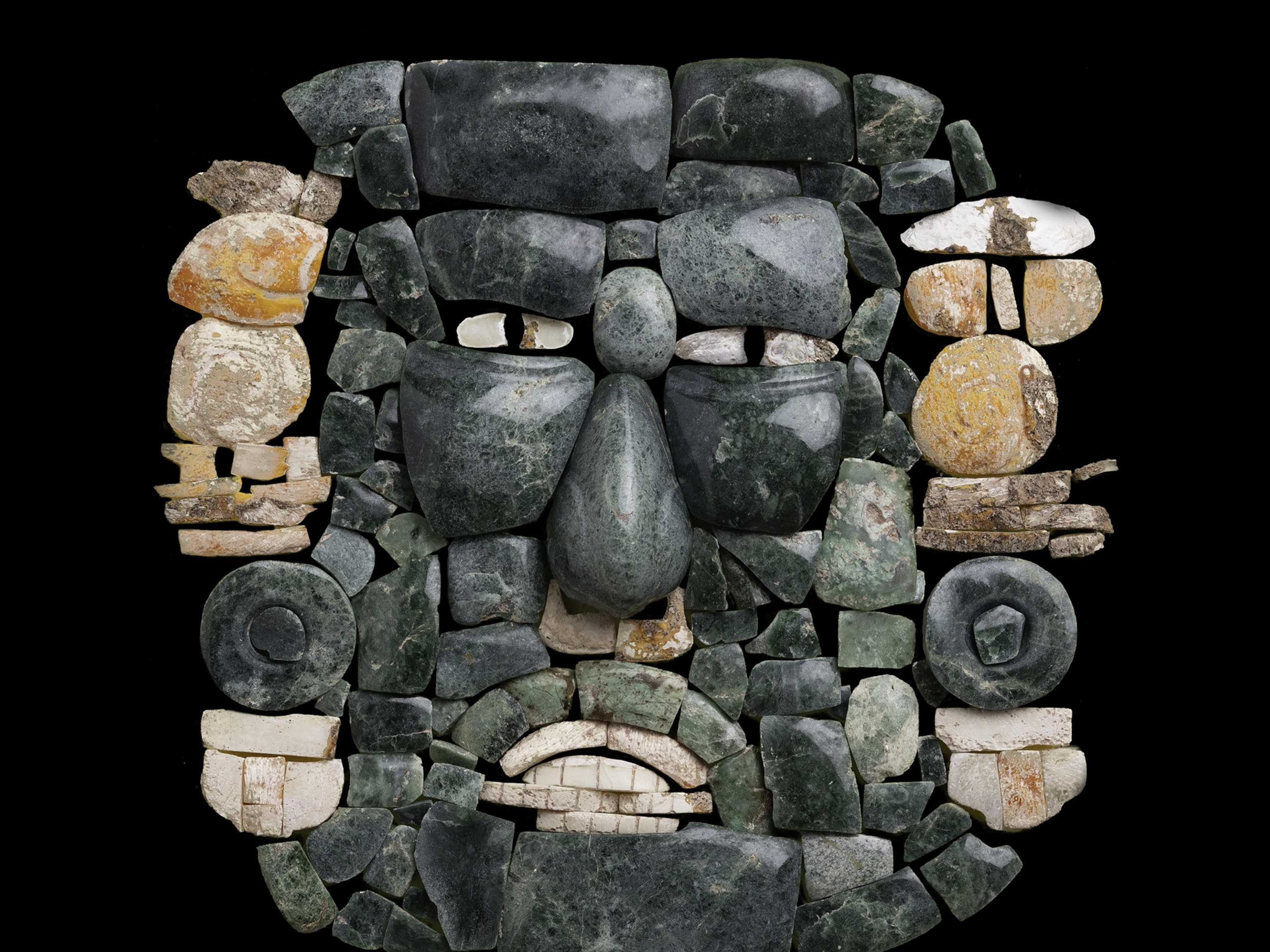
DNA from Stone Age ‘chewing gum’ tells an incredible story
For the first time, scientists used 5,700-year-old saliva to sequence the complete human genome of an ancient hunter gatherer, as well as the world of microbes that lived inside her.
She lived on an island in the Baltic Sea around 3,700 B.C. She was lactose intolerant and may have suffered from gum disease, and she had recently dined on a meal that included ducks and hazelnuts. Like many ancient European hunter-gatherers, she was likely blue-eyed with dark skin and hair.
What we can’t know about the individual researchers call Lola, however, is how long she lived—or even when or where she died—because all that’s known about Lola comes from DNA captured in a small wad of tree pitch that she chewed on and spat out some 5,700 years ago.
This unique genetic snapshot in history is revealed in a study published in Nature Communications, marking the first time researchers have been able to reconstruct a complete human genome from the deep past via “non-human material” rather than from physical remains.

In addition to Lola’s genetic story, the international team of researchers was also able to identify the DNA of plants and animals she had likely recently consumed, as well as the DNA of the countless microbes that lived inside her mouth—collectively known as her oral microbiome.
“This is the first time we have the complete ancient human genome from anything other than [human] bone, and that in itself is quite remarkable,” says Hannes Schroeder, an associate professor of evolutionary genomics at the University of Copenhagen’s Globe Institute and a co-author of the study. “What’s so exciting about this material is that you can also get microbial DNA.”
While our scientific understanding of the human microbiome is still in its very early stages, researchers are beginning to understand what an important role it plays in our health. Variations in our microbiome may impact everything from susceptibility to infection and heart disease to even possibly behavior.
By being able to sequence ancient DNA together with the individual’s microbiome, Schroeder says, researchers will be able to understand how the human microbiome has evolved over time—revealing, for instance, how the dietary shift from hunting and gathering to agriculture thousands of years ago may have altered our microbiome for better or worse.
Stone-Age “chewing gum”
Birch pitch (also called tar), a glue-like substance made by heating birch bark, has been used to fasten stone blades to handles in Europe since at least the Middle Pleistocene (approximately 750,000 to 125,000 years ago). Blobs of pitch imprinted with human teeth marks have been found at ancient toolmaking sites, where archaeologists surmise the pitch was chewed to soften before use. Due to the antiseptic nature of birch bark, it may have also had medicinal properties.
Chewed pitch is sometimes the only indicator of a human presence at sites where physical remains are not found, and archaeologists have long suspected that the otherwise unremarkable wads may be a source of ancient DNA. It’s only recently, however, that they’ve had the tools to extract genomic data from what many call ancient chewing gum.
Earlier this year, nearly complete human genomes were sequenced from 10,000-year-old chewed birch pitch originally excavated 30 years ago at the site of Huseby Klev in Sweden. “These artifacts have been known for quite some time,” says Natalija Kashuba, a doctoral student in the department of Archaeology and Ancient History at Uppsala University and lead author on the Huseby Klev study. “They just haven’t been in the spotlight before.”
In the latest study, Lola’s DNA and microbiome were extracted from a chewed bit of birch pitch excavated at the site of Syltholm on the Danish island of Lolland (hence Lola’s moniker). Archaeologists at Syltholm have found evidence for tool making and animal butchery at the site, but no human remains.
The pitch was radiocarbon dated to around 5,700 years ago, the advent of the Neolithic period in Denmark. This was a time when practices of Mesolithic hunter-gatherers were being disrupted by the introduction of agriculture from areas to the south and east.
See this 7,000-year-old woman who was among Sweden's last hunter-gatherers.
Lola’s DNA shows none of the genetic markers associated with new farming populations entering northern Europe, bolstering a growing idea that genetically distinct hunter-gatherer populations in the region survived for longer than previously thought. Her genome also reveals that she was lactose intolerant, which supports the theory that European populations developed the ability to digest lactose as they began to consume milk product from domesticated animals.
The majority of bacteria identified in Lola’s oral microbiome are considered normal inhabitants of the mouth and upper respiratory tract. Some, however, are associated with severe periodontal disease. Her microbiome also shows the presence of Streptococcus pneumoniae, although it’s impossible to tell from the sample whether Lola was suffering from pneumonia at the time she was chewing the birch pitch. The same goes for Epstein-Barr virus, which infects more than 90% of the world’s population but usually causes few symptoms (unless it develops into mononucleosis).
Seeing the invisible
Researchers were also able to identify the DNA of mallard ducks and hazelnuts from the chewed pitch, suggesting that the foodstuffs had been recently consumed by Lola. This ability to isolate specific plant and animal DNA from ancient human saliva trapped in pitch may enable us to “see” dietary habits—such as the consumption of insects—that might otherwise be invisible in the archaeological record, says archaeologist Steven LeBlanc, former director of collections at Harvard’s Peabody Museum of Archaeology and Ethnology.
LeBlanc helped usher in the era of extracting human DNA from non-human material more than a decade ago, with a pioneering 2007 study on chewed yucca fibers discovered in archaeological sites in the American Southwest. He believes the toolkit that scientists have now to obtain not only a full human genome, but also microbiome and dietary information from non-human material, will set the new gold standard for understanding how ancient populations grew and changed over time, how healthy they were, and what they subsisted on.
“It's absolutely amazing how fast the field has progressed,” he says. “What we were able to do then compared to what they can do now is just shockingly different.”
It’s also a good reminder that even the most unremarkable artifacts should be studied and preserved, LeBlanc adds, recalling times when he’d show visitors to the Peabody Museum the desiccated, masticated pieces of yucca he researched.
“They would look at this crummy little piece of fiber, and I would say the museum has curated this for over a hundred years. And nobody could figure out why we had bothered to save this little thing. Then I’d say we got human DNA out of it, and their eyes would just go wow.”
LeBlanc imagines that the custodians of Europe’s “Stone Age chewing gum” have faced similar questions about their ancient blobs of birch pitch, which may now turn out to contain priceless information that will change our understanding of the deep past.
“There must have been plenty of [government] ministers who were saying, ‘Why are you wasting money and storage space on those stupid little black wads?’”
“This is why museums curate this stuff—because we don't know what to do with it yet.”







